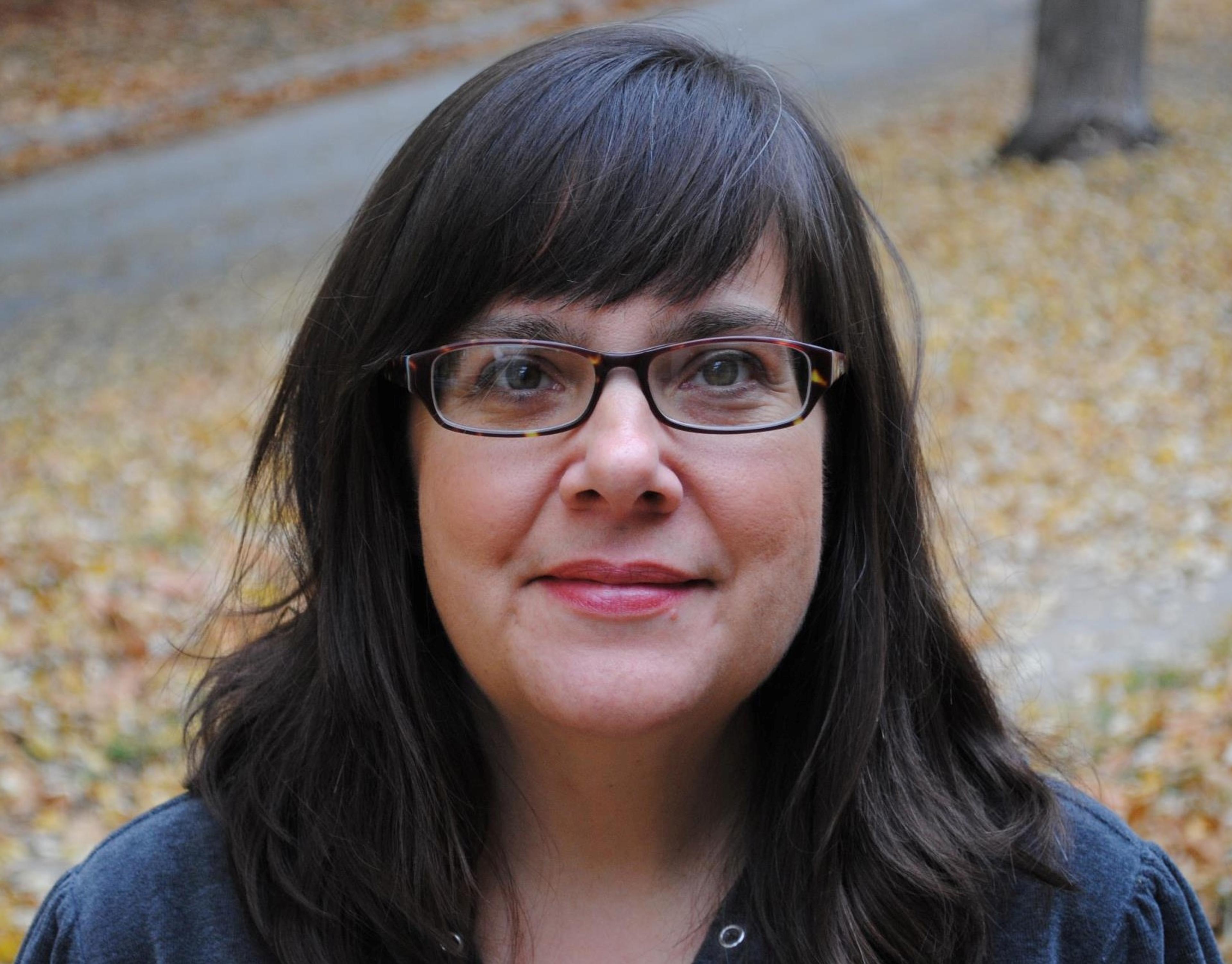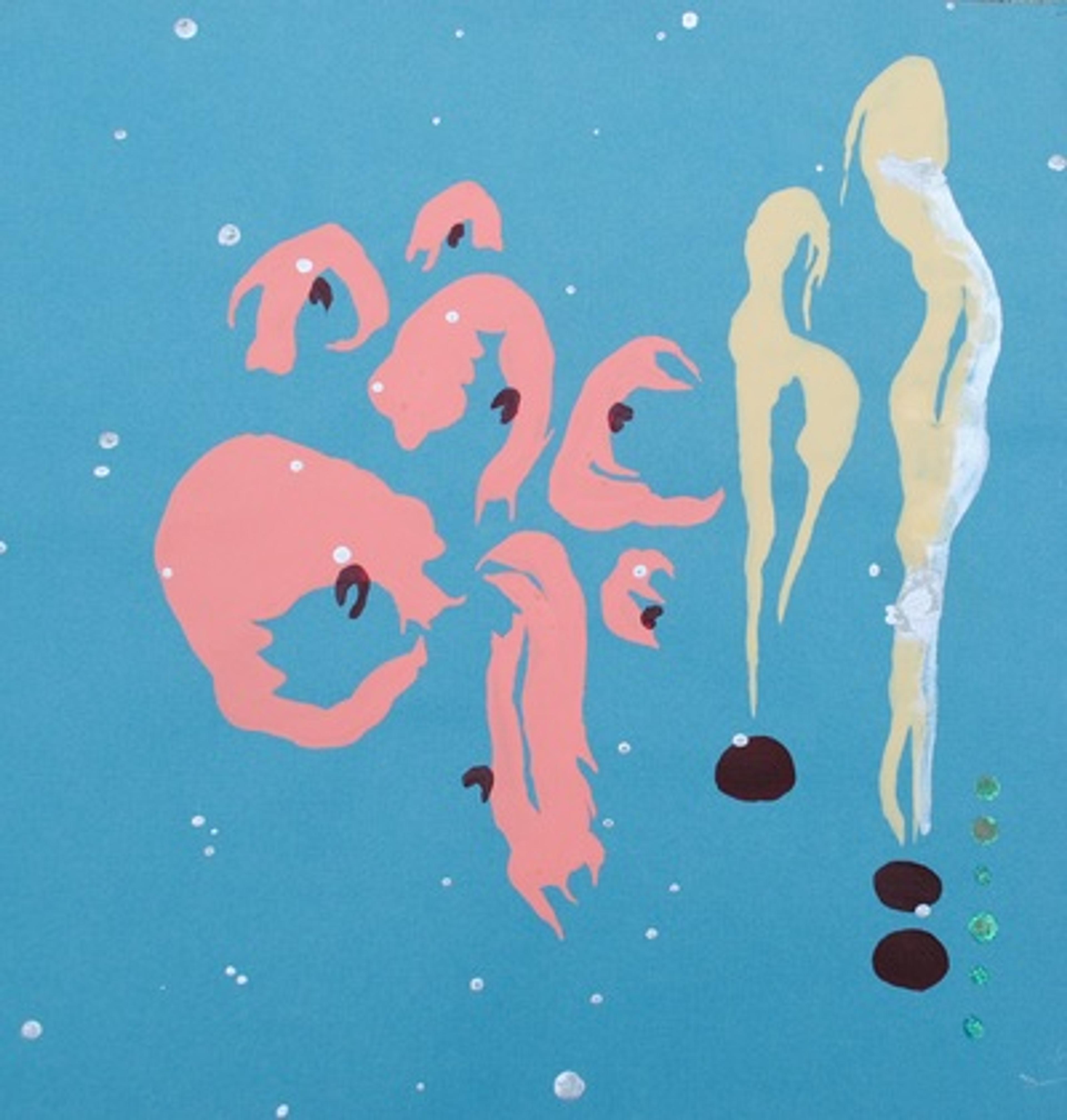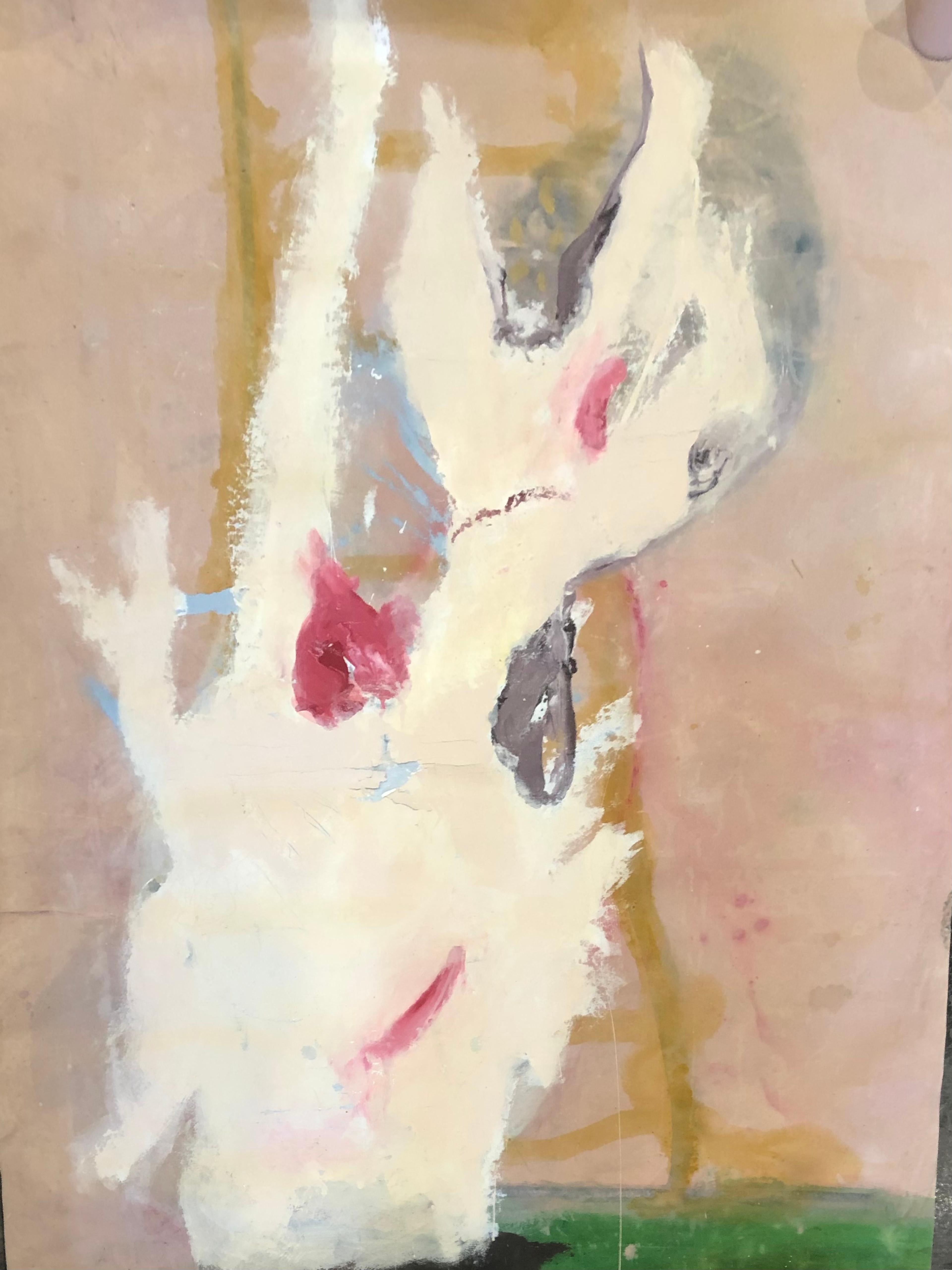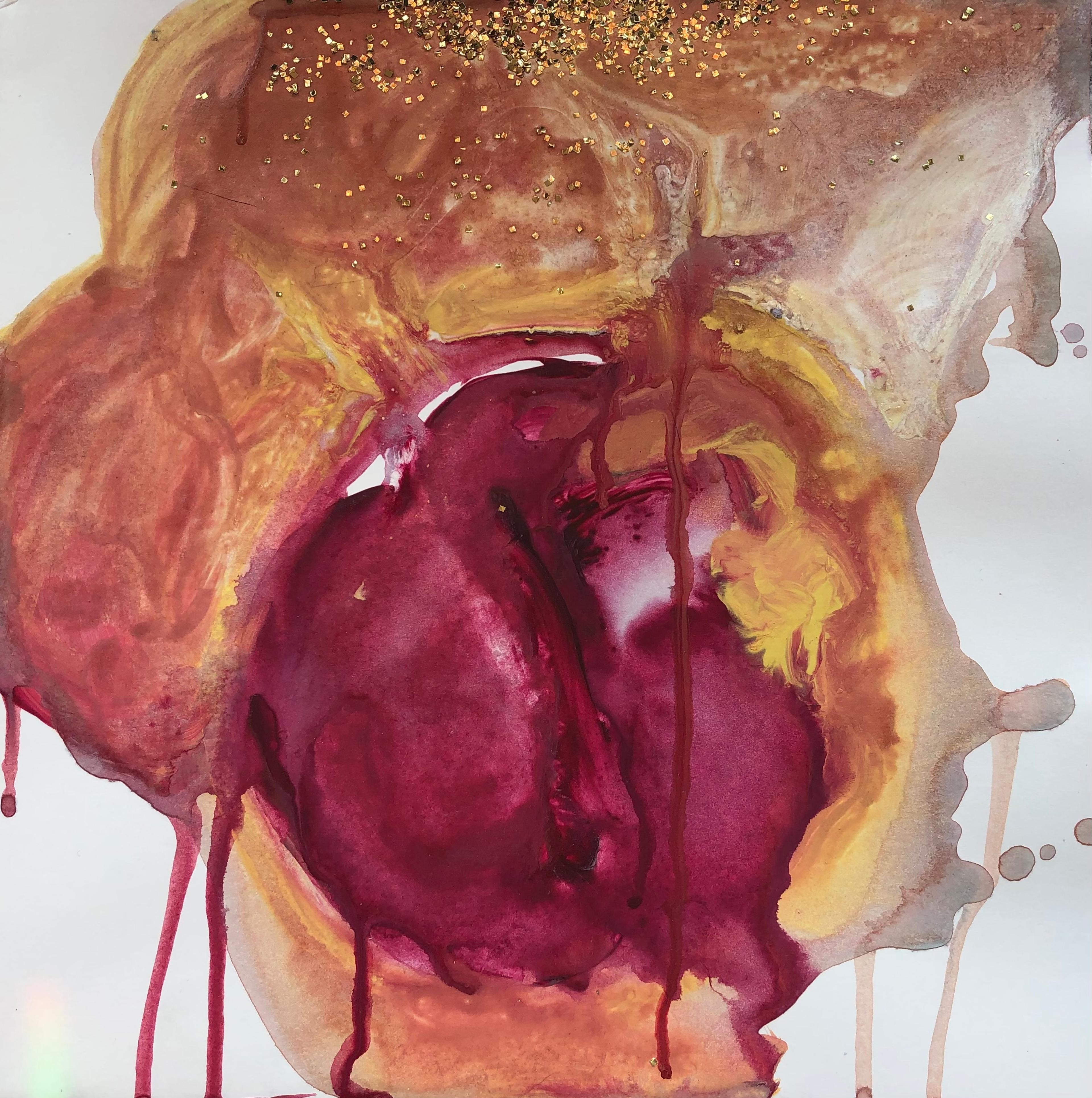In a captivating dialogue with House of Coco, we immerse ourselves in the profound creative world of artist Lori Tatreau. Lori’s art delves into the interplay of forms and colors, depicting connections and dissolutions that resonate deeply with the human experience. In this exclusive interview, Lori shares specific pieces where this concept becomes poignant, each stroke carrying emotions and inspirations that lead to transformative art.
We explore Lori’s unique choice of working spaces, from sun porches to dining room tables, understanding how these environments shape her artistic journey. With an experimental spirit, she shares moments where dabbling with new mediums led to unexpected, inspiring results, further enriching her artistic evolution.
Lori’s work, often featuring ‘alien-like’ figures, stands as a metaphor for human existence, capturing moments of feeling out of place or disconnected. Through her abstract art, she communicates complex emotions, fostering connections without the burden of race or gender, allowing viewers to experience shared humanity.
Join us in this insightful conversation as Lori shares her inspirations, creative processes, and the profound impact of art on human connections…

Your art explores the interplay of forms and colours, often depicting connections and dissolutions. Could you share a specific piece where this concept is particularly poignant for you? What inspired it and what emotions were you aiming to convey?
Certainly. One painting that embodies the interplay of opposing colors and forms is “Turning.” The contrasting shades of pinks and blacks create a compelling tension. The pink forms seem to either shout at each other or passively orbit around, never touching. Layers beneath add a mysterious backdrop, hinting at containment or a struggle for liberation. I don’t approach my art with predefined meanings; instead, I begin with a color and let the forms guide me. This layering process allows multiple interpretations to surface, inviting viewers to find their own meanings.
Your choice of working spaces, from a sun porch to a dining room table, is fascinating. How does the environment you work in influence your creative process? Are there specific spaces that have significantly impacted your work?
My choice of workspace has been shaped by practical considerations such as time, budget, and available room. Traveling extensively led me to give up a separate studio, pushing me to work in whatever space was unoccupied during renovations. Later, as a parent, I shifted to small watercolors on the dining table, leading to a new artistic direction. Working on a smaller scale allowed me to invest more time in each piece, resulting in a slower yet more prolific creative process. Now, having a larger studio, I can explore a broader range of materials and sizes, adding depth to my work.
You mentioned using various supports and mediums. Can you describe an instance where experimenting with a new medium led to unexpected and inspiring results? How do these experiments contribute to your artistic growth?
Recently, I revisited a series created two decades ago, experimenting with diverse materials like paint, ink, glitter, and text on vellum and canvas paper.
When displayed as a large installation, these pieces took on new life. Incorporating text, such as song lyrics and thoughts, allowed me to convey personal experiences in a more open and authentic manner.
Additionally, the use of gold, in its various forms, added depth, symbolizing value. Such experiments not only enrich my artistic expression but also enable me to connect on a deeper level with my audience.

The idea of your art as stand-ins for human experiences is intriguing. Could you elaborate on how these ‘alienlike’ figures represent our existence? What message or story do you hope viewers perceive through these representations?
My abstract forms, often resembling alien figures, capture the sense of feeling out of place in specific situations. These shapes, free from specific race or gender, represent emotions like discomfort and disconnection. I have a series called “Hungry Ghosts,” embodying insatiable desires and helplessness.
These figures highlight societal issues, reflecting the struggles faced in today’s world. Through these shapes, I aim to evoke empathy, making viewers reflect on their own experiences of not fitting in.
Working on a small scale due to space constraints, you mentioned envisioning painting barn-sized artworks someday. Can you describe the vision you have for these large-scale pieces? How do you think working on such a grand scale would impact your creative expression?
I envision creating monumental works akin to Picasso’s Guernica or Anselm Kiefer’s masterpieces. These pieces would address political and social issues, demanding attention through their sheer size and intensity. Working on such a scale would allow me to use my entire body, employing ladders and abundant materials.
Some works might delve into dark, profound commentaries, while others could offer a comforting embrace. The scale would intensify my creative process, enabling me to explore vast themes with a heightened emotional impact.

Your affinity for modernism and abstract expression is evident. How do you balance traditional techniques with your innovative approach to creating art? Are there specific artists or movements that inspire your modernist exploration?
I draw inspiration from abstract expressionists like Motherwell, Kline, and Frankenthaler. Their mark-making techniques influence my work, as does the humour and commentary of Philip Guston.
Anselm Kiefer’s emotional layering and Georgia O’Keefe’s simplicity and authenticity resonate with me. While I incorporate elements from these masters, I infuse my unique style, often integrating humor, unconventional materials, and distinct mark-making.
By blending tradition with innovation, I strive to create a bridge between modernism and post-modernism, exploring diverse artistic possibilities.
The process of creating art is often as important as the final outcome. Can you share a memorable experience during your creative process where you felt completely immersed, transcending your ego and self? What did you learn from that moment?
During my MFA at Hunter College, I grappled with finding my artistic format. Reading Conversations Before the End of Time, a book on environmentalism and art, I felt abstract painting was inadequate to address pressing issues.
However, I rediscovered my love for abstract art, realizing its power to connect with people emotionally.
One significant moment was when I unknowingly wore mismatched shoes all day, absorbed in my work. Losing track of time and self in art is liberating, allowing me to access the core of my expression. This immersive experience taught me the importance of embracing my true passion and allowing creativity to flow organically.
The quotes you provided emphasise the transformative power of creative work. How do these words resonate with your own artistic journey? Have there been moments where you felt your art had a profound impact on others, or perhaps even transformed their perspectives?
Art transformed my life when I shifted my major from social work to art after being moved by a fellow student’s painting. Similarly, when viewers express how my art resonates with them, I find profound meaning in my work.
Witnessing others connect with my emotions and experiences reaffirms the transformative potential of art. My aim is to share my vulnerability and evoke genuine emotions, allowing viewers to see the world from a different perspective.

You mentioned seeing yourself within the canon of American painting. In what ways do you believe your work contributes to the evolution of this tradition? How do you envision your legacy within the context of American art?
If I were considered part of American painting, I hope my abstraction combines simplicity, emotional depth, and modern craft materials. I aim to straddle the line between modernism and post-modernism, integrating unconventional materials and unique display methods. My legacy, within American art, would ideally blend traditional techniques with innovative approaches, fostering a diverse dialogue within the artistic community.
The idea of art as a gift to the world is beautiful. Could you share a specific instance where you felt your art was a gift to others, eliciting a meaningful response or connection from your audience? How did that experience inspire your future work?
An impactful moment occurred in undergrad when a viewer connected deeply with a personal painting. This encounter inspired me to continue sharing my life openly through art.
The genuine connection between my art and its viewers motivates me to delve deeper into my emotions, believing that authenticity resonates universally. This experience fuels my desire to create art as a gift, fostering meaningful connections and enriching the lives of others.
The concept of navigating without a map resonates deeply with the creative process. Can you recall a moment when you faced uncertainty or creative block and how you overcame it? What advice would you give to emerging artists facing similar challenges?
I have experienced years-long creative blocks, learning not to be harsh on myself. Creativity takes diverse forms, whether in art or everyday life. Recognizing opportunities to express creativity, even beyond traditional art-making, is crucial. Personally, accepting my unique approach and intertwining it with social commentary freed my creativity. I trust my process, allowing myself to flow without rigid expectations. My advice is to embrace uncertainty, experiment freely, and explore various avenues of creative expression.
Your work often incorporates suggestions of landscapes. How does nature inspire your creations? Are there specific natural elements or scenes that consistently find their way into your art? What do these elements symbolize for you?
Nature, especially open skies and landscapes, deeply influences my work. Growing up in Nebraska, the horizon represents endless possibilities to me. Mountains, oceans, rivers, and rocks all find their way into my art, symbolising interconnectedness and shared existence.
Macroscopic views of moss, cells, or galaxies inspire me, showcasing nature’s diverse patterns. Abstraction allows these elements to coexist, emphasizing the relationship between forms and environments.

Your choice to work in multiples and on squares is intriguing. Is there a particular reason for this preference? How do these repetitive forms contribute to the overall narrative or aesthetic of your body of work?
I am drawn to the challenge of organizing designs within squares, and the 12” x 12” size resonates with my passion for record albums. It offers an intimate yet impactful canvas that can be both handheld and wall-mounted.
The grid structure, seemingly contrary to my flowing abstraction, acts as a container, exploring ideas of connection and boundaries. Repetition in my work signifies unity in diversity, bringing disparate thoughts together into a harmonious whole.
Artistic influences can come from various sources. Are there any non-artistic influences, such as literature, music, or personal experiences, which have significantly shaped your creative perspective? How do these influences manifest in your artwork?
Literature and music play pivotal roles in my life, finding expression in my art through incorporation of text. Song lyrics and lines from books serve as inspiration, adding layers of meaning to my work. While not directly illustrated, these influences provide a rich backdrop, allowing viewers to explore deeper connections and interpretations.
Your work is deeply rooted in the exploration of human connections. What message or feeling do you hope viewers take away from your art? In your opinion, how can art foster a sense of connection and understanding among diverse audiences?
I hope viewers find familiarity in my art, recognizing shared experiences and emotions. Art has the power to unite people, highlighting our common humanity beyond superficial differences.
By delving into the depths of emotion, my work seeks to evoke empathy and understanding, bridging gaps between diverse audiences. Through genuine emotions, art becomes a universal language, fostering connections that transcend barriers.
Our readers love to travel. What destination is at the top of your bucket list?
While I haven’t traveled extensively, destinations like Lake Como and Tuscany in Italy have always fascinated me. Additionally, London currently captures my imagination, especially after discovering the show Escape to the Country.
When lacking motivation, what destination is at the top of your bucket list?
When in need of inspiration, I yearn for the simplicity of nature. While I used to find solace in a Colorado cabin by the river, I now seek new escapes, such as drives in the prairie or any outdoor walk, to rejuvenate my creative spirit.
Where can people follow you and find out more?
To explore my art and connect with me, please visit my website at www.loritatreau.com and follow my journey on Instagram @loritatreaustudio. You can also find my artworks for sale at this link and support my work on Patreon at this page.


Comments are closed.